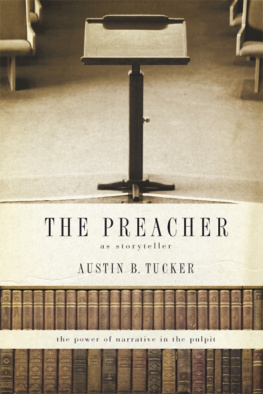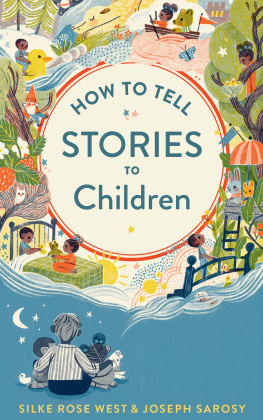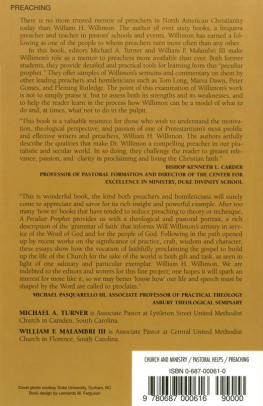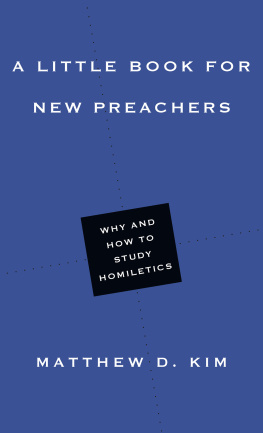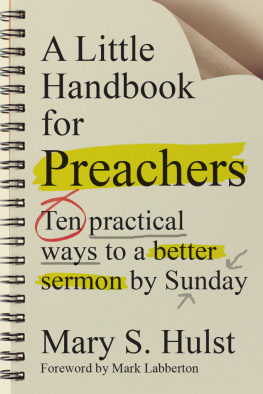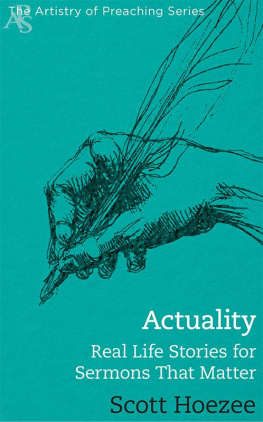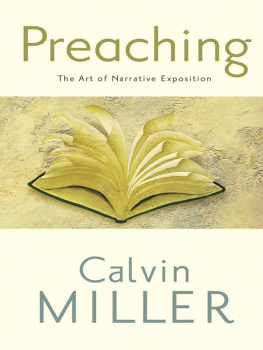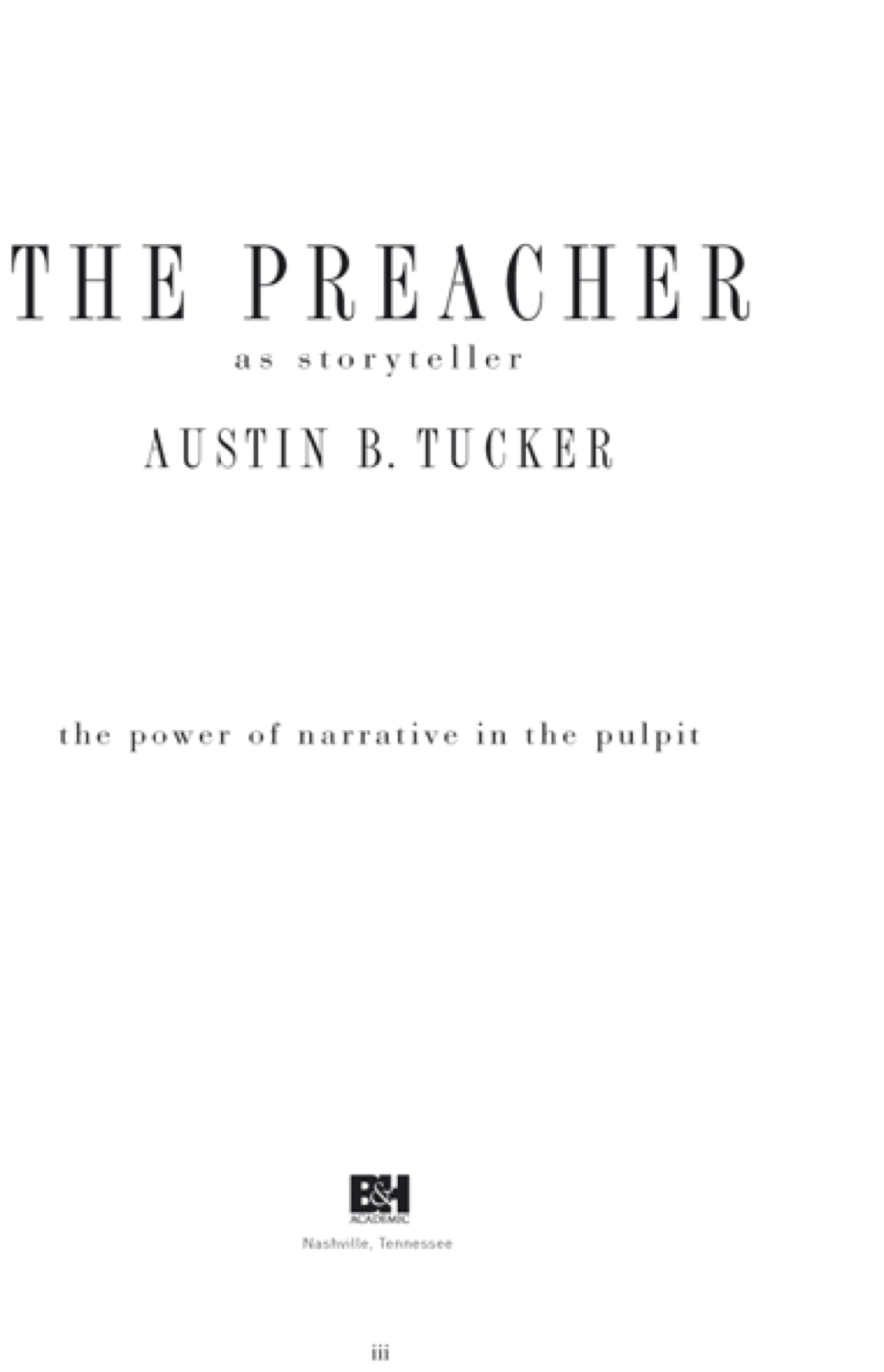Copyright 2008
by Austin B. Tucker
All rights reserved
Printed in the United States of America
Published by B&H Publishing Group
Nashville, Tennessee
Dewey Decimal Classification: 251
Subject Heading: PREACHING\CLERGYBIOGRAPHY\STORYTELLING
Unless otherwise noted, Scripture quotations are taken from The Holy Bible, New International Version, copyright 1973, 1978, 1984 by International Bible Society. Other versions used:
ASV, the American Standard Version
KJV, the King James Version
NKJV, the New King James Version, copyright 1979, 1980, 1982, Thomas Nelson, Inc., Publishers.
TEV, Today's English Version, Second Edition Copyright 1966, 1971, 1976, 1992 American Bible Society. Used by permission
Italics in biblical text have been added bu the author for emphasis.
To Beverly,
David, Christie, and Jeff,
and to
Chase, Erin, and Allison
and
To all who are telling the story of Jesus
and want to do a better job of
connecting with all who hear
FOREWORD
ONCE UPON A TIME...there is something about those four words that stirs an emotional response in all of us. From the earliest days when we can understand language, we are drawn to stories. They entertain us, teach us, engage our emotions. At their best, stories can transform our lives.
Stories are all around us. We live in a culture of story. Stories come to us in the form of books and songs. We are amused by stories on televisionfrom situation comedies to dramas to reality programming. (Who will be voted off the island this week? Which contestant will overcome the obstacles and succeed this time?) Even the commercials we watch are mini-stories of joy and sorrow, failure and success.
At the heart of our Christian faith is a storythe story of God's creation, man's fall, and Christ's redemptive act. The pages of Scripture overflow with storiesthe story of a Creator God crafting the universe, then shaping men and women to fellowship with Him; the story of Noah obeying God despite the jeers of the crowd and ultimately preserving humanity; the story of Abraham, who left home to go to a place he did not know because God told him to do so; the story of Joseph, who experienced pain and abuse in so many ways, yet eventually receiving amazing authority that enabled him to save his own family; the story of David, who emerged from the obscurity of the sheepfold to become the king of Israel; and on it goes. Cut the stories from the Bible and there would be so little left.
No one understood the power of a well-told story better than Jesus. He came proclaiming the kingdom of God, and He primarily did that through telling stories. He knew that the kingdom is too important for rational explanation alone; some things can only be understood through stories.
He told us about a Samaritan who helped a man who would not have given him the time of day, and we learned that we are to serve our neighboreven when that neighbor isn't the one we might choose. He told us about a lost coin, a lost sheep and a lost son, and we understood that God seeks us out no matter what. He told us about a treasure hidden right under our noses. He told us about builders whose wisdom (or lack thereof) could be determined by the foundation on which they built. Virtually every time people gathered around Him, Jesus told them a story.
No wonder, then, that good preachers know the value of story. Stories help us grab the imaginations of listeners as they identify and recreate those stories in their own thoughts. Stories help us recognize and understand truth in new ways.
In recent years, preaching has rediscovered and reemphasized the place of story. Narrative as a rhetorical tool has become a widely discussed topic in homiletical literature. Yet the use of story in preaching is nothing new.
In The Preacher as Storyteller , Austin Tucker has done his preaching colleagues a valuable service by providing a toolbox for using story in our proclamation. In this useful book, he demonstrates the power of story and helps us better understand what makes a good story work. He helps us see how to craft and share stories that make a difference. The book is filled with valuable resources to help preachers become more strategic storytellers.
The section that portrays those great preachers who have modeled the art of storytelling would alone make the book worth the price! Tucker allows us to walk alongside pulpit giants like Beecher and Talmage, Spurgeon and Boreham, Meyer and Moody. In the process we gain valuable insights on how to use stories to shape lives.
Good preaching and storytelling go together. This excellent book will help me do a better job of using story to communicate biblical truth in the days ahead. I hope it does the same for you.
Michael Duduit
Editor, Preaching magazine (www.preaching.com)
PREFACE
IN MY CHILDHOOD, BEFORE TELEVISION came to every house in the community, we used our imaginations to entertain ourselves and one another. We told one another ghost tales and other stories, and we heard parents and grandparents tell stories from their own experience. In church, stories informed our understanding, shaped our values, and stirred our wills to commitment to Christ. Indeed, except for hymns we used in worship and the rote learning of Scripture memory assignments, the stories are most of what stuck in memory over the years.
My interest in storytelling grew as I became a pastor and sometimes a teacher of preachers. That interest spiked when I was privileged to be a guest professor one year in Wake Forest, North Carolina, and the next year in New Orleans, Louisiana. In both seminaries my assignment was to teach, among other courses, electives in narrative preaching. My interest has grown ever since. It is my strong conviction, and the thesis of this book, that you can greatly improve your preaching by sharpening your storytelling skills.
Any book worth reading, though it may have one named author, is the sum of many minds. In addition to the many who are quoted and acknowledged in the notes, thanks is due to the friends who read chapters and offered suggestions. Tyler Durham, Casey Holland, Joe McKeever, and Skip Rainbolt are preachers who read chapters. So did my son David Tucker and my son-in-law, Jeff Deyo. Thanks, fellows. My wife Beverly read most chapters more than once and often caught errors the computer programs miss. I am grateful for all this help, though I did not always accept every suggestion. They made the work a better book, but I accept responsibility for all shortcomings.
John Landers deserves special thanks for guiding the proposal through the editorial committee before he retired from B&H Publishing Group. Then he agreed to continue as my editor on contract with his former employer. Thanks, Brother John. It has been a joy working with you.
There are many examples of narrative in these pages. How could anyone talk about illustrations without illustrating? Some of these narratives are my own compositions, and some were previously published. I thank the newspapers, magazines, and other publishers who first considered them worth printing for permission to reproduce them here. Many other examples are selected from the writings of others. Both in the footnotes and in the context, I have labored diligently to acknowledge those I owe. If I missed giving anyone due credit, please forgive me; it was certainly not intentional.
May God bless these pages to the sharpening of the storytelling skills of many servants of the Word. May this bring greater glory to Christ our Savior and greater joy to those who proclaim that greatest of all stories. May souls be saved and the church built up in the most holy faith.

